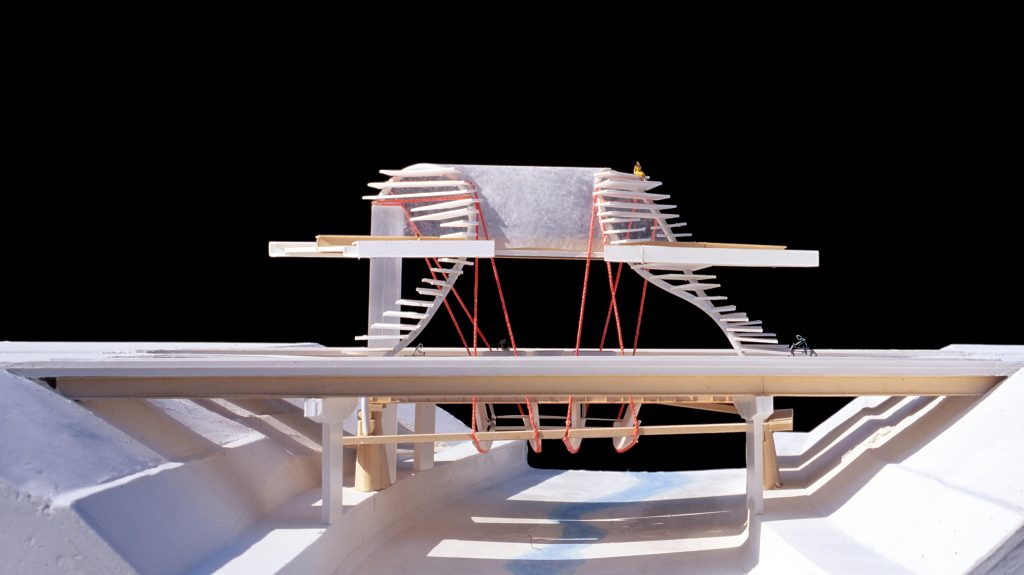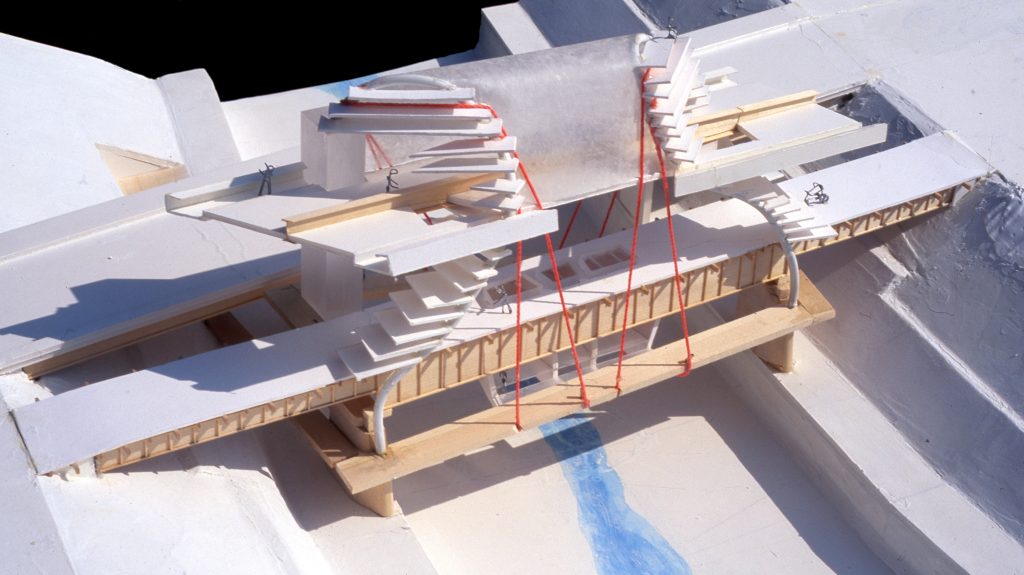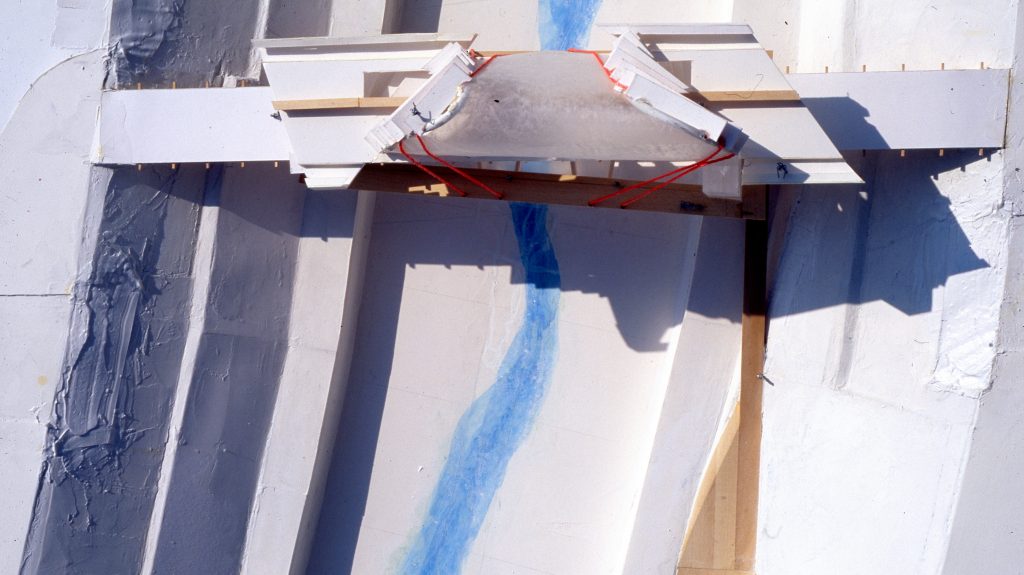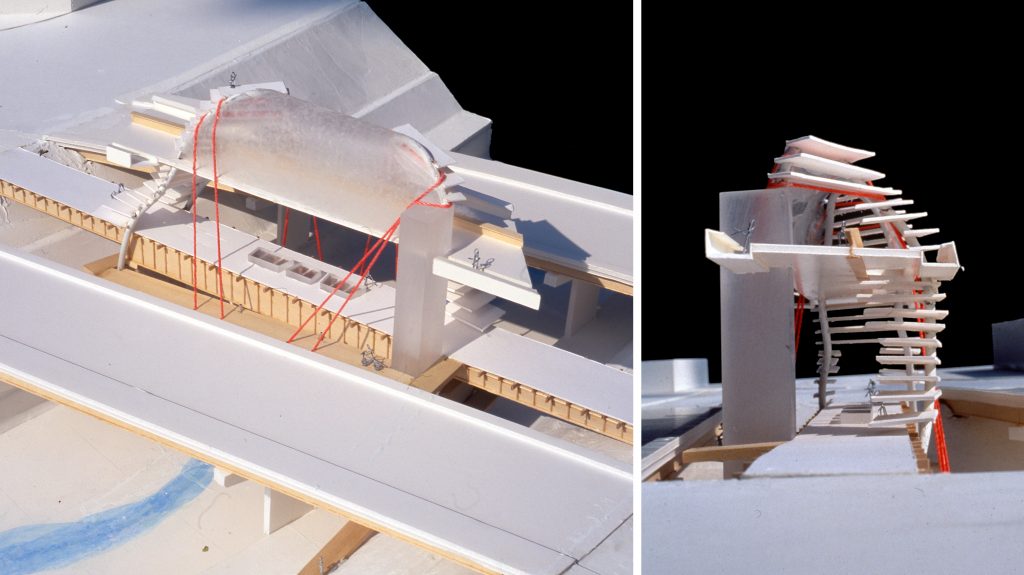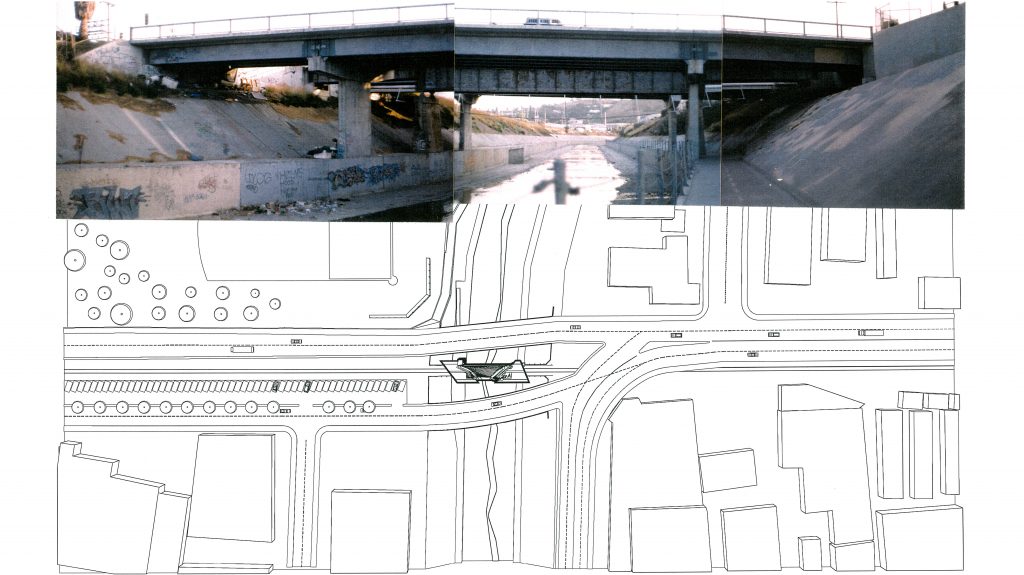Location
Los Angeles, California
Program
Infrastructure
Dates
1998
Prior to 1825, Ballona Creek was an integrated part of the Los Angeles River. A major flood changed the course of the river, and Ballona Creek became a completely distinct waterway. A devastating flood of the Los Angeles River System in 1938 prompted a much-maligned flood-control project undertaken by the United States Army Corps of Engineers to line the above-ground waterways with concrete.
From 1877 to 2010 a Southern Pacific Railways main line followed National Boulevard along the northern border of the Hayden Tract. At the point where the tracks crossed Ballona Creek (the boundary between Los Angeles and Culver City), National split into separate roadways with the railway bridge spanning in between.
In 2010 a major expansion of the Los Angeles Metro System reconfigured National Boulevard and the Ballona Creek Bridge to accommodate a new passenger rail system, called the Expo Line, to connect Downtown Los Angeles to Culver City and Santa Monica. Prior to that development we proposed a new pedestrian connection over Ballona Creek to reconnect the neighborhoods previously divided by the concrete river channel.
Our proposal opened the bridge to pedestrian and bicycle use by reconstituting the bridge platform as a plaza over the river below. Two primary vertical supports originate in piers located in the riverbed and twist over the platform above to reinforce the aging steel span of the railway bridge.
Stairways span across the new support pipes on either side of the bridge and allow pedestrian access to an elevated platform. Roughly analogous to the size and configuration of the original railroad deck, the elevated platform spans between the vertical supports and cantilevers beyond to the east and west.
A new pedestrian and bicycle access ramp begins at the roadway surface and wraps down into the concrete river channel to connect to public walkways and bike paths within the river channel. As the ramp descends it wraps around the structural piers and is directly supported on either side of the river. The long span across the width of the river is suspended by cables at four intermediate spans that tie to the vertical supports above the bridge.
